Honoring the Pioneering Work of Charles Fort
December 1, 2023
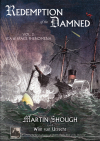 Authors Martin Shough and Wim van Utrecht, “both specialists in researching anomalous historical aerial phenomena—continue their project of honouring the pioneering work of Charles Fort by re-investigating some of his important cases,” writes Bob Rickard, in the Fortean Times review of their new book, Redemption of the Damned Vol. 2: Sea and Space Phenomena. “Where Fort is shown to have made some errors in reporting or lacked crucial data that was published elsewhere or later…there are many more cases in which Fort is shown to have correctly reported the data on which he offers his distinctive (and often sardonic) conclusions. With these, the authors have been able to consolidate Fort’s discovery with new information from later investigations or publications; we can now have greater trust in these cases. Shough and van Utrecht deserve to be applauded for their diligent labour among dusty archives, the fruits of which serve to underline both the value of research into anomalous phenomena and of re-examining the data … probably the closest forteans can come to being ‘scientific’ about their work.” Bill Chalker, writing in the blog The Oz Files, sums it up saying: “Redemption of the Damned provides seasoned Forteans and new players a wonderful resource that resonates powerfully with contemporary manifestations of the ‘damned.’ Highly recommended.”
Authors Martin Shough and Wim van Utrecht, “both specialists in researching anomalous historical aerial phenomena—continue their project of honouring the pioneering work of Charles Fort by re-investigating some of his important cases,” writes Bob Rickard, in the Fortean Times review of their new book, Redemption of the Damned Vol. 2: Sea and Space Phenomena. “Where Fort is shown to have made some errors in reporting or lacked crucial data that was published elsewhere or later…there are many more cases in which Fort is shown to have correctly reported the data on which he offers his distinctive (and often sardonic) conclusions. With these, the authors have been able to consolidate Fort’s discovery with new information from later investigations or publications; we can now have greater trust in these cases. Shough and van Utrecht deserve to be applauded for their diligent labour among dusty archives, the fruits of which serve to underline both the value of research into anomalous phenomena and of re-examining the data … probably the closest forteans can come to being ‘scientific’ about their work.” Bill Chalker, writing in the blog The Oz Files, sums it up saying: “Redemption of the Damned provides seasoned Forteans and new players a wonderful resource that resonates powerfully with contemporary manifestations of the ‘damned.’ Highly recommended.”
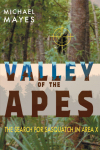 The idea of trying to acquire a specimen of Sasquatch to prove its existence is a hugely controversial subject. But that’s what the North American Wood Ape Conservancy has tried to do for a decade in order to obtain governmental protections for the species. Valley of the Apes: The Search for Sasquatch in Area X recounts the determined effort of dozens of academics, wildlife professionals, scientists, among others: their work, challenges, and findings. Obviously they didn’t succeed, or their effort would have made headlines around the world. But as Matt Pruitt says in the Foreword, “The events detailed in this book provide some of the best reasons to be hopeful that a resolution to the Sasquatch mystery is close at hand.” Find out why in this new book by Michael Mayes, the author of Shadow Cats: The Black Panthers of North America.
The idea of trying to acquire a specimen of Sasquatch to prove its existence is a hugely controversial subject. But that’s what the North American Wood Ape Conservancy has tried to do for a decade in order to obtain governmental protections for the species. Valley of the Apes: The Search for Sasquatch in Area X recounts the determined effort of dozens of academics, wildlife professionals, scientists, among others: their work, challenges, and findings. Obviously they didn’t succeed, or their effort would have made headlines around the world. But as Matt Pruitt says in the Foreword, “The events detailed in this book provide some of the best reasons to be hopeful that a resolution to the Sasquatch mystery is close at hand.” Find out why in this new book by Michael Mayes, the author of Shadow Cats: The Black Panthers of North America.
A Courageous Book on a High-Risk Research Topic
December 1, 2023
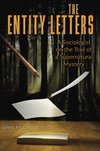 James McClenon has earned near universal praised for his latest book, The Entity Letters: A Sociologist on the Trail of a Supernatural Mystery, on a mediumistic sitter group (SORRAT) that witnessed a host of table movements, table levitations, poltergeist phenomena, earthquake effects, and other startling physical events. Gerhard Mayer of the Institute for Frontier Areas of Psychology and Mental Health in Freiburg, Germany, is of the opinion that “James McClenon has written a courageous book which reflects his scientific curiosity, openness, and commitment to a ‘high-risk’ research topic. The kind of field study the author has described in detail is of great importance because it touches the core of paranormal macro-phenomena in the Western world. And it covers all the accompanying emotions, such as astonishment, doubt, skepticism, but also the excitement of having extraordinary experiences and getting in touch with something unexplainable. An important book.” Robin Carlile in Magonia gets to the heart of the matter when he writes “It seems the author reaches the conclusion that there is almost a need for some element of fraud to ‘prime the pump’ so that rapport can be built with the entities. The essential ingredient appears to be an unconditional belief in the entities, and when this is harnessed in a group, very powerful emanations can follow. The question then is whether such entities actually exist, or have been conjured up from the dark recesses of the human mind, collective or individual…I found the subject matter and content of this book highly illuminating,” Charles Emmons, a fellow sociologist at Gettysburg College, Pennsylvania, put it succinctly: “This is truly a ‘supernatural mystery’ bedeviled by the ‘trickster.’ A classic.”
James McClenon has earned near universal praised for his latest book, The Entity Letters: A Sociologist on the Trail of a Supernatural Mystery, on a mediumistic sitter group (SORRAT) that witnessed a host of table movements, table levitations, poltergeist phenomena, earthquake effects, and other startling physical events. Gerhard Mayer of the Institute for Frontier Areas of Psychology and Mental Health in Freiburg, Germany, is of the opinion that “James McClenon has written a courageous book which reflects his scientific curiosity, openness, and commitment to a ‘high-risk’ research topic. The kind of field study the author has described in detail is of great importance because it touches the core of paranormal macro-phenomena in the Western world. And it covers all the accompanying emotions, such as astonishment, doubt, skepticism, but also the excitement of having extraordinary experiences and getting in touch with something unexplainable. An important book.” Robin Carlile in Magonia gets to the heart of the matter when he writes “It seems the author reaches the conclusion that there is almost a need for some element of fraud to ‘prime the pump’ so that rapport can be built with the entities. The essential ingredient appears to be an unconditional belief in the entities, and when this is harnessed in a group, very powerful emanations can follow. The question then is whether such entities actually exist, or have been conjured up from the dark recesses of the human mind, collective or individual…I found the subject matter and content of this book highly illuminating,” Charles Emmons, a fellow sociologist at Gettysburg College, Pennsylvania, put it succinctly: “This is truly a ‘supernatural mystery’ bedeviled by the ‘trickster.’ A classic.”
A Model of How Historical Fortean Investigation Should Be Done
December 1, 2023
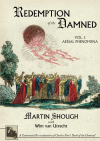 Martin Shough and Wim van Utrecht have produced the first detailed study of Charles Fort’s groundbreaking book, The Book of the Damned, a century after its first publication. In Redemption Of The Damned: Vol. 1 Aerial Phenomena, the first of two volumes, both in full color, the authors have tackled all 82 of Fort’s anomalous observations in the fields of astronomy, meteorology, and atmospheric optics and subjected them to detailed critical scrutiny against period maps, investigation reports, and additional first-hand testimony. Kim Møller Hansen of Scandinavian UFO Information calls it “an insanely thorough and admirable detective work documented on more than 400 closely packed pages, over 800 notes and, not least, very interesting photos, drawings, maps, tables, etc.” Jerome Clark, writing in the Journal of Scientific Exploration, agrees: “The research that has gone into Redemption is nothing short of staggering…Redemption is a worthy and necessary addition to the small library of scientifically and informationally weighty UFO volumes.” And John Rimmer nails it in his review in Magnolia : “Damned fine research . . . Each case is a model of how historical Fortean investigation should be done. . . . This is a remarkable achievement of not just Fortean study, but more general historical study…”
Martin Shough and Wim van Utrecht have produced the first detailed study of Charles Fort’s groundbreaking book, The Book of the Damned, a century after its first publication. In Redemption Of The Damned: Vol. 1 Aerial Phenomena, the first of two volumes, both in full color, the authors have tackled all 82 of Fort’s anomalous observations in the fields of astronomy, meteorology, and atmospheric optics and subjected them to detailed critical scrutiny against period maps, investigation reports, and additional first-hand testimony. Kim Møller Hansen of Scandinavian UFO Information calls it “an insanely thorough and admirable detective work documented on more than 400 closely packed pages, over 800 notes and, not least, very interesting photos, drawings, maps, tables, etc.” Jerome Clark, writing in the Journal of Scientific Exploration, agrees: “The research that has gone into Redemption is nothing short of staggering…Redemption is a worthy and necessary addition to the small library of scientifically and informationally weighty UFO volumes.” And John Rimmer nails it in his review in Magnolia : “Damned fine research . . . Each case is a model of how historical Fortean investigation should be done. . . . This is a remarkable achievement of not just Fortean study, but more general historical study…”
Witty, Honest, and Penetrating Insights Into Parapsychology Today
December 1, 2023
 Philosopher Stephen Braude’s books are known for their original and penetrating insights, and his latest book, Dangerous Pursuits: Mediumship, Mind, and Music, says psychologist Stanley Krippner, “is no exception.” Hoyt Edge, writing in the Journal of Scientific Exploration, calls Stephen Braude “…the most prolific of the late 20th- and early 21st- century philosophers writing about parapsychology, and his work in the philosophical aspects of parapsychology has been the most influential in this field for the past several decades…” Braude, says psychologist Charles T. Tart, is “not afraid to wrestle with complexities others skim over…like mediums who cheat sometimes, or just what is this ‘person’ that we think might survive death.” In his review of the book in Fortean Times, Tom Ruffles notes that “Braude’s rigorous approach is a corrective to shallow thinking in psychical research, and there is much of value here for anyone wishing to delve into the topics in more depth than is often the case in the literature.” But don’t think for a minute that this is another dry philosophical tome. “The author’s wit, honesty, and tenacity shine throughout his writings…” writes Kenneth C. Turner in his review of the book for the Journal of Parapsychology. For Ruffles, the first and final essays, in particular, are “really ‘on the edge’ – exploring areas about which we seldom think.”
Philosopher Stephen Braude’s books are known for their original and penetrating insights, and his latest book, Dangerous Pursuits: Mediumship, Mind, and Music, says psychologist Stanley Krippner, “is no exception.” Hoyt Edge, writing in the Journal of Scientific Exploration, calls Stephen Braude “…the most prolific of the late 20th- and early 21st- century philosophers writing about parapsychology, and his work in the philosophical aspects of parapsychology has been the most influential in this field for the past several decades…” Braude, says psychologist Charles T. Tart, is “not afraid to wrestle with complexities others skim over…like mediums who cheat sometimes, or just what is this ‘person’ that we think might survive death.” In his review of the book in Fortean Times, Tom Ruffles notes that “Braude’s rigorous approach is a corrective to shallow thinking in psychical research, and there is much of value here for anyone wishing to delve into the topics in more depth than is often the case in the literature.” But don’t think for a minute that this is another dry philosophical tome. “The author’s wit, honesty, and tenacity shine throughout his writings…” writes Kenneth C. Turner in his review of the book for the Journal of Parapsychology. For Ruffles, the first and final essays, in particular, are “really ‘on the edge’ – exploring areas about which we seldom think.”
Available Now: Cosmic Rain
December 1, 2023
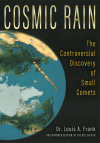 Forty years ago, world-renowned University of Iowa space physicist Louis A. Frank found evidence that would lead to a startling discovery: Every minute several huge “snowballs” break up as they approach the Earth and deposit a large cloud of water vapor in our upper atmosphere. His conclusion, based on data from the Dynamic Explorer 1 spacecraft acquired at the limits of detection, created a storm of controversy among scientists. This is the story that was told in the first edition of this book, The Big Splash, published in 1990. But the story does not end there. Less than a decade later, Frank’s discovery of these previously undetected small comets was confirmed when images were received from cameras aboard a different spacecraft named Polar. The news of this “vindication” of Frank’s provocative theory in 1997 made the front pages of several large metropolitan newspapers, including The New York Times, The Philadelphia Inquirer, and The Washington Post. Cosmic Rain: The Controversial Discovery of Small Comets—a large format, full color, greatly expanded edition of The Big Splash—tells this never-before-told follow-up, in Frank’s own words, of the confirmation of the existence of small comets and the harsh criticism he faced from colleagues for upsetting so many scientific applecarts in the process.
Forty years ago, world-renowned University of Iowa space physicist Louis A. Frank found evidence that would lead to a startling discovery: Every minute several huge “snowballs” break up as they approach the Earth and deposit a large cloud of water vapor in our upper atmosphere. His conclusion, based on data from the Dynamic Explorer 1 spacecraft acquired at the limits of detection, created a storm of controversy among scientists. This is the story that was told in the first edition of this book, The Big Splash, published in 1990. But the story does not end there. Less than a decade later, Frank’s discovery of these previously undetected small comets was confirmed when images were received from cameras aboard a different spacecraft named Polar. The news of this “vindication” of Frank’s provocative theory in 1997 made the front pages of several large metropolitan newspapers, including The New York Times, The Philadelphia Inquirer, and The Washington Post. Cosmic Rain: The Controversial Discovery of Small Comets—a large format, full color, greatly expanded edition of The Big Splash—tells this never-before-told follow-up, in Frank’s own words, of the confirmation of the existence of small comets and the harsh criticism he faced from colleagues for upsetting so many scientific applecarts in the process.
Purring with Cryptozoological Delight
December 1, 2023
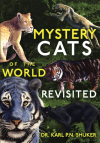 “At long last,” George M. Eberhart begins his lengthy review of Karl Shuker’s Mystery Cats of the World Revisited: Blue Tigers, King Cheetahs, Black Cougars, Spotted Lions, and More in the Summer 2021 issue of the Journal of Scientific Exploration. “After 31 years, the first book by noted British zoologist and cryptozoologist Karl Shuker has been expanded and updated. Mystery Cats of the World first appeared in 1989 and was the only book to review feline cryptids worldwide. In this 2020 edition, Shuker repeats this admirable achievement, and in the process gives us a solid overview of current knowledge of felid evolution, taxonomy, and genetic variation. In fact, the only feline mystery cat he does not describe is Hello Kitty. This edition will leave you purring with cryptozoological delight.”
“At long last,” George M. Eberhart begins his lengthy review of Karl Shuker’s Mystery Cats of the World Revisited: Blue Tigers, King Cheetahs, Black Cougars, Spotted Lions, and More in the Summer 2021 issue of the Journal of Scientific Exploration. “After 31 years, the first book by noted British zoologist and cryptozoologist Karl Shuker has been expanded and updated. Mystery Cats of the World first appeared in 1989 and was the only book to review feline cryptids worldwide. In this 2020 edition, Shuker repeats this admirable achievement, and in the process gives us a solid overview of current knowledge of felid evolution, taxonomy, and genetic variation. In fact, the only feline mystery cat he does not describe is Hello Kitty. This edition will leave you purring with cryptozoological delight.”
 It took nearly a century for anyone to begin a detailed examination of the events Charles Fort described in that now classic work, The Book of the Damned. And now just a couple of years after the release of the work that began that reexamination—Redemption of the Damned: Vol. 1 Aerial Phenomena—Martin Shough and Wim van Utrecht have completed Volume 2 of that monumental work—Redemption of the Damned, Volume 2: Sea & Space Phenomena—this time focusing on events that took place on the sea and in space. As George Eberhart, the former senior editor of American Libraries, writes in the Foreword: “Martin Shough and Wim van Utrecht use an arsenal of 21st-century tools, both online and in archives, to deconstruct and reconstruct the astronomical, meteorological, and oceanographic anomalies that Fort has puzzled us with since 1919. Yes, Fort cherry-picked his facts to tell a good story, as the authors point out. Nonetheless, they manage to extract the marrow from many of these old bones, and in doing so, take Fort to a new level of relevance.” No one who calls himself or herself a true fortean should be without the knowledge revealed in the two volumes of this essential reference work.
It took nearly a century for anyone to begin a detailed examination of the events Charles Fort described in that now classic work, The Book of the Damned. And now just a couple of years after the release of the work that began that reexamination—Redemption of the Damned: Vol. 1 Aerial Phenomena—Martin Shough and Wim van Utrecht have completed Volume 2 of that monumental work—Redemption of the Damned, Volume 2: Sea & Space Phenomena—this time focusing on events that took place on the sea and in space. As George Eberhart, the former senior editor of American Libraries, writes in the Foreword: “Martin Shough and Wim van Utrecht use an arsenal of 21st-century tools, both online and in archives, to deconstruct and reconstruct the astronomical, meteorological, and oceanographic anomalies that Fort has puzzled us with since 1919. Yes, Fort cherry-picked his facts to tell a good story, as the authors point out. Nonetheless, they manage to extract the marrow from many of these old bones, and in doing so, take Fort to a new level of relevance.” No one who calls himself or herself a true fortean should be without the knowledge revealed in the two volumes of this essential reference work.
A Thoroughly Investigated Universal Phenomenon
December 1, 2023
 Funny how things happen, like publishing a book on miracles in a year as fraught as 2020. But Michael Grosso’s Smile of the Universe: Miracles in an Age of Disbelief is certainly not your run-of-the-mill book of miracles. David E. Presti, professor of neurobiology at the University of California, Berkeley, says that “Michael Grosso has written a sophisticated philosophical and scientific analysis of miracles—a universal phenomenon perhaps never-before investigated so thoroughly in such a sober and open-minded manner.” Bob Ricard, in his review the book in Fortean Times, writes: “Grosso discusses in detail an extensive range of phenomena with which ‘science’ has failed to engage, except to argue that they have no reality or causation within the ‘scientific’ doctrines of physicality and materialism…Grosso’s prose is clear, methodical, and open-minded, and like Fort, exhorts us to have confidence in questioning limitations set by others, because ‘miracles violate nothing but intellectual provincialism.'” And Michael Peter Langevin, editor of The Echo World, sees in this tale of “unexplainable, documented occurrences” Grosso’s underlying optimism: “In this wonderful book Michael puts forth the premise that the transformation of society and human nature is possible.”
Funny how things happen, like publishing a book on miracles in a year as fraught as 2020. But Michael Grosso’s Smile of the Universe: Miracles in an Age of Disbelief is certainly not your run-of-the-mill book of miracles. David E. Presti, professor of neurobiology at the University of California, Berkeley, says that “Michael Grosso has written a sophisticated philosophical and scientific analysis of miracles—a universal phenomenon perhaps never-before investigated so thoroughly in such a sober and open-minded manner.” Bob Ricard, in his review the book in Fortean Times, writes: “Grosso discusses in detail an extensive range of phenomena with which ‘science’ has failed to engage, except to argue that they have no reality or causation within the ‘scientific’ doctrines of physicality and materialism…Grosso’s prose is clear, methodical, and open-minded, and like Fort, exhorts us to have confidence in questioning limitations set by others, because ‘miracles violate nothing but intellectual provincialism.'” And Michael Peter Langevin, editor of The Echo World, sees in this tale of “unexplainable, documented occurrences” Grosso’s underlying optimism: “In this wonderful book Michael puts forth the premise that the transformation of society and human nature is possible.”
Now Available: Mystery Cats of the World Revisited
December 1, 2023
 How is it possible to improve on the only indisputably definitive work on mystery cats in existence? Well, Karl Shuker has done just that. His very first book, Mystery Cats of the World, is a classic of the cryptozoological literature that’s now highly sought after by collectors and lauded by cryptozoologists and mainstream zoologists alike for its scrupulously scientific, objective analyses. Now, after more than 30 years, Shuker has delivered Mystery Cats of the World Revisited: Blue Tigers, King Cheetahs, Black Cougars, Spotted Lions, and More, a fully illustrated, updated, greatly-expanded edition of that original work that examines many new mystery cats reports as well as revisits those previously featured in the original 1989 edition. This beautiful new book is more than 400 large-format pages long with more than 80 illustrations and weighs a hefty 1.5 pounds. So just what are these enigmatic cat-like animals that have been glimpsed in wild and lonely areas of the world?
How is it possible to improve on the only indisputably definitive work on mystery cats in existence? Well, Karl Shuker has done just that. His very first book, Mystery Cats of the World, is a classic of the cryptozoological literature that’s now highly sought after by collectors and lauded by cryptozoologists and mainstream zoologists alike for its scrupulously scientific, objective analyses. Now, after more than 30 years, Shuker has delivered Mystery Cats of the World Revisited: Blue Tigers, King Cheetahs, Black Cougars, Spotted Lions, and More, a fully illustrated, updated, greatly-expanded edition of that original work that examines many new mystery cats reports as well as revisits those previously featured in the original 1989 edition. This beautiful new book is more than 400 large-format pages long with more than 80 illustrations and weighs a hefty 1.5 pounds. So just what are these enigmatic cat-like animals that have been glimpsed in wild and lonely areas of the world?









